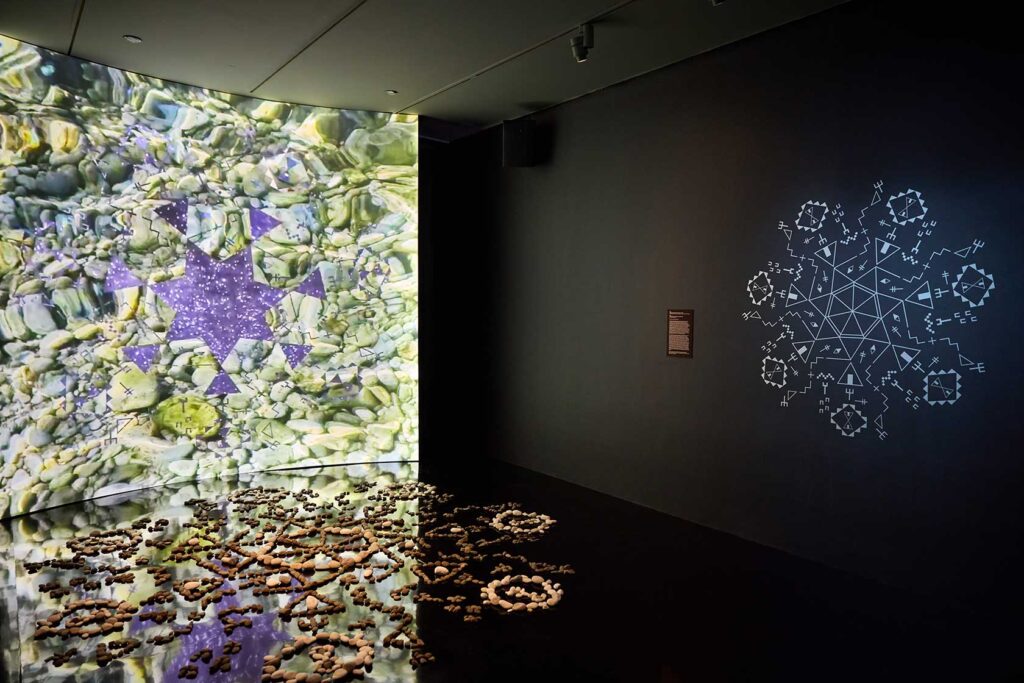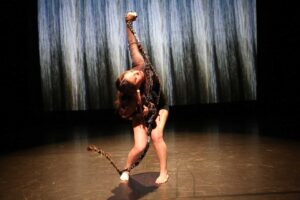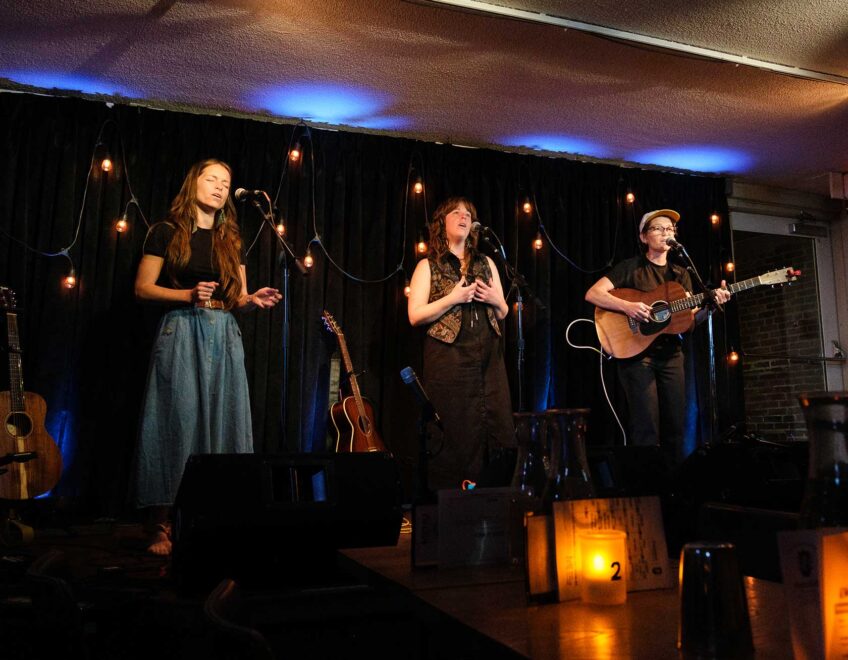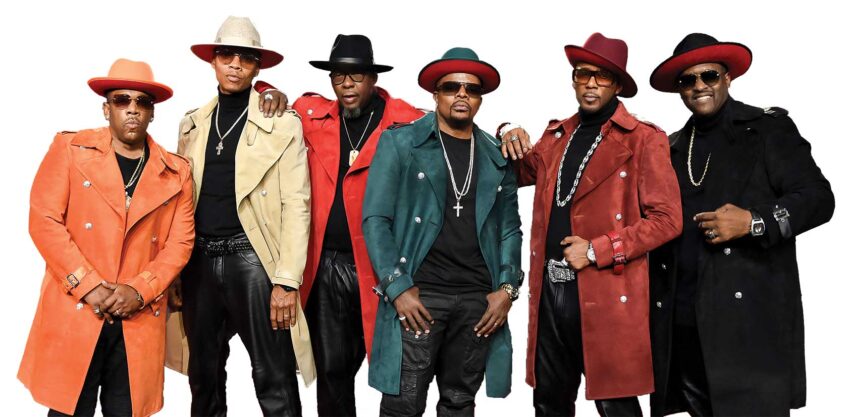Machine learning meets Indigenous tradition in ‘List Projects 31: Kite’

Banner Arts & Culture Sponsored by Cruz Companies

Dreams are a central theme of the exhibition. Kite uses the Lakhóta visual language, which has traditionally been stewarded by women and two-spirited people, to create visual representations of dreams. These dreams are also translated into musical scores and performances.
The show centers on “Wicháhpi Wóihanbleya (Dreamlike Star),” an immersive environment made with sculpture, video and sound. Viewers can walk into the space and see a large projection of stars on a purple night sky and a pattern of stones on the floor that reflect a visual translation of the artist’s dreams. These images, sky, stars and stones, are rooted in nature, but translated through projection and technology they feel less grounding and more intergalactic.
Kite will create a solo live performance within this space on April 17, activating the environment in real time.
Selby Nimrod, assistant curator, and Zach Ngin, curatorial assistant at the List say Kite utilizes “new methods, new collaborators, new media and new ways of thinking—displaying a unique ability to surpass the limitations of artistic, musical and academic disciplines through embracing elasticity and invention and working nimbly while engaging respectfully with collaborators, communities and the unknown.”

Kite, “unhčéla wílečhala, for Nathan Young (Waxing Crescent Peyote Moon),” 2020. Silver thread and beads on black leather. COURTESY PHOTO
Collaboration is key within the show. Kite collaborates with technology and nature, and examines the ethical boundaries of those relationships, but also with other artists including Lakhóta musician Santee Witt and Muscogee artist and choreographer Olivia Camfield.
A number of pieces in the exhibit showcase a length of braided hair that has been interwoven with digital sensors to control sound, video, light or AI-generated text in response to Kite’s movement or touch. This is a visceral fusion of machine learning, AI and Indigenous tradition.
Rather than shying away from artificial intelligence and the impact it’s having on creative spaces, Kite examines how AI can be harnessed ethically using the Lakhóta philosophy of the Good Way. This strategy makes ethical decisions looking generations into the future, a type of ancestral foresight that could be used to make a more ethical balance between humans, technology and nature that mutually supports each party without exploitation.
“List Projects 31: Kite” is on view at the MIT List Visual Arts Center through May 18. The center is free to all always.








